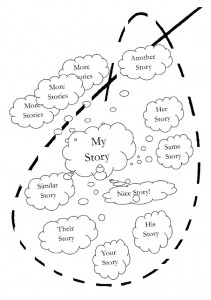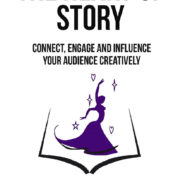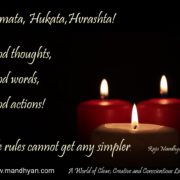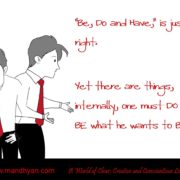the HeART of STORY: Science behind Stories and Storytelling
What exactly is the science behind a story? Why do stories stir up so much of our emotions and our humanity? Why do they have such a lasting effect on us? What happens when we tell stories? What happens to people when they listen to a story? What happens to me when I tell a story?
Firstly, as I tell the story, I begin to relive the experience. I relive the wonder and the excitement that is part of the truth in the story. As I use my left brain to recreate the setting, the context, and the characters involved, my right brain jumps in to participate by offering images, colors, sounds, and textures. Then, both my left and the right brain begin to have fun together and go to play. The whole exercise of storytelling becomes a whole brain activity for me, the storyteller.
The second amazing secret behind this whole activity where the brain goes to play is the fact that this sense of play is also very contagious. How is it contagious? It releases endorphins and other sweet smells of bliss and fun that draw in and attract other people to join. Because this activity was started by the left brain setting up a logical scene and then was ignited by the right brain firing up a party, the minds of all those around fully participate in the thrill by suspending their wariness and dropping their normal cerebral resistance to novelty. This phenomenon is quite similar to when we see people dance and we are drawn in to join the dance.
When we see a bunch of people on the street joyfully laughing and playing, our own spirits light up. If inhibitions are holding us back, we feel like dropping them and jumping right into the fun. In storytelling, the listeners’ minds begin to likewise log in, plug in, and salsa with our imagination and train of thoughts. They do this regardless of how much or how little they know about the story background or about the storyteller’s experience. This is because as we create and put up verbal holograms/holographs in the conversation space, the listeners also set up movie screens in their minds and watch movies of their own making, with themselves as the main character. The movie we are putting across through storytelling inspires and projects a parallel movie in their minds. The images, colors, sounds, and drama in our conversations spark multiple, similar, copies of scenes running in the minds of our audience. This is magic in action.

Illustration 1: When you start telling a story, it helps others recall and relive their own stories, their own experiences.
This is exactly why the streets of Hollywood glitter with gold. Because in our minds and in the minds of countless audiences, we all think and believe we are part of the magic and mystique that rises out of Hollywood. In my mind, I am Peter Pan or the Lone Ranger and you must be Dr. Livingstone, I presume?
This is synergy and co-creativity in action. This is the real story behind the power of storytelling.
Now, the third most powerful thing about stories and storytelling is the fact that they impact the deepest part of our brain and our emotions. They cut through our cerebral defenses and sink in. What are cerebral defenses and why do they have to be surpassed? The human brain of a newborn baby comes with some pre-embedded coding towards his traits and character. These are acquired from parental traits and characters. This is genetics. Right after birth, the newborn baby’s brain starts to absorb and accumulate data from what he sees, hears, smells, touches, and tastes. This data gathers fast, accumulates rapidly, and integrates really swiftly in early childhood. All this data is acquired and stored in the form of pixels, sound bytes, touch and other modalities of sensory inputs.
Most of the data that is primarily absorbed, accumulated,and integrated acquires importance over time. They maintain their importance throughout our lives. We call them our values and beliefs. We can be, and we do turn emotional about our values and beliefs. Emotions burst out from thinking of things sensitive to us—images, sounds and smells that have been around us, within us for a long time. Our emotions, thus, are the stories of our lives.
All forms of communication address and tap into recent memories that are not ancient or primal to us. Storytelling is the exception. All other forms of communication connect with images, sounds, and smells acquired not so long ago that reside in our recent memories. This neighborhood of our “recent” memories is a highly congested, constantly active desktop of chaos and novelty. And the older and tender memories of our growing years fear and avoid such chaos and congestion.
When narrating and listening to stories, the sights, sounds, aromas, textures, and flavors from our growing-up, formative years begin to surface. They burst through the fear of the current, cerebral chaos and part through it like an old, bearded man once mythically parted the sea to get his people across to the other side.
Every time we tune into a story, the chaos and the confusion of cognition fall away to make a path so our emotions easily dance with the emotions expressed by the storyteller, as we see and hear them. Every time our emotions are happily touched, we become eager to do something, to take action, to build new things, and to stretch our limits as individuals, communities, and organizations.
Check out my book, the HeART of STORY, organizational and leadership storytelling…









Leave a Reply
Want to join the discussion?Feel free to contribute!